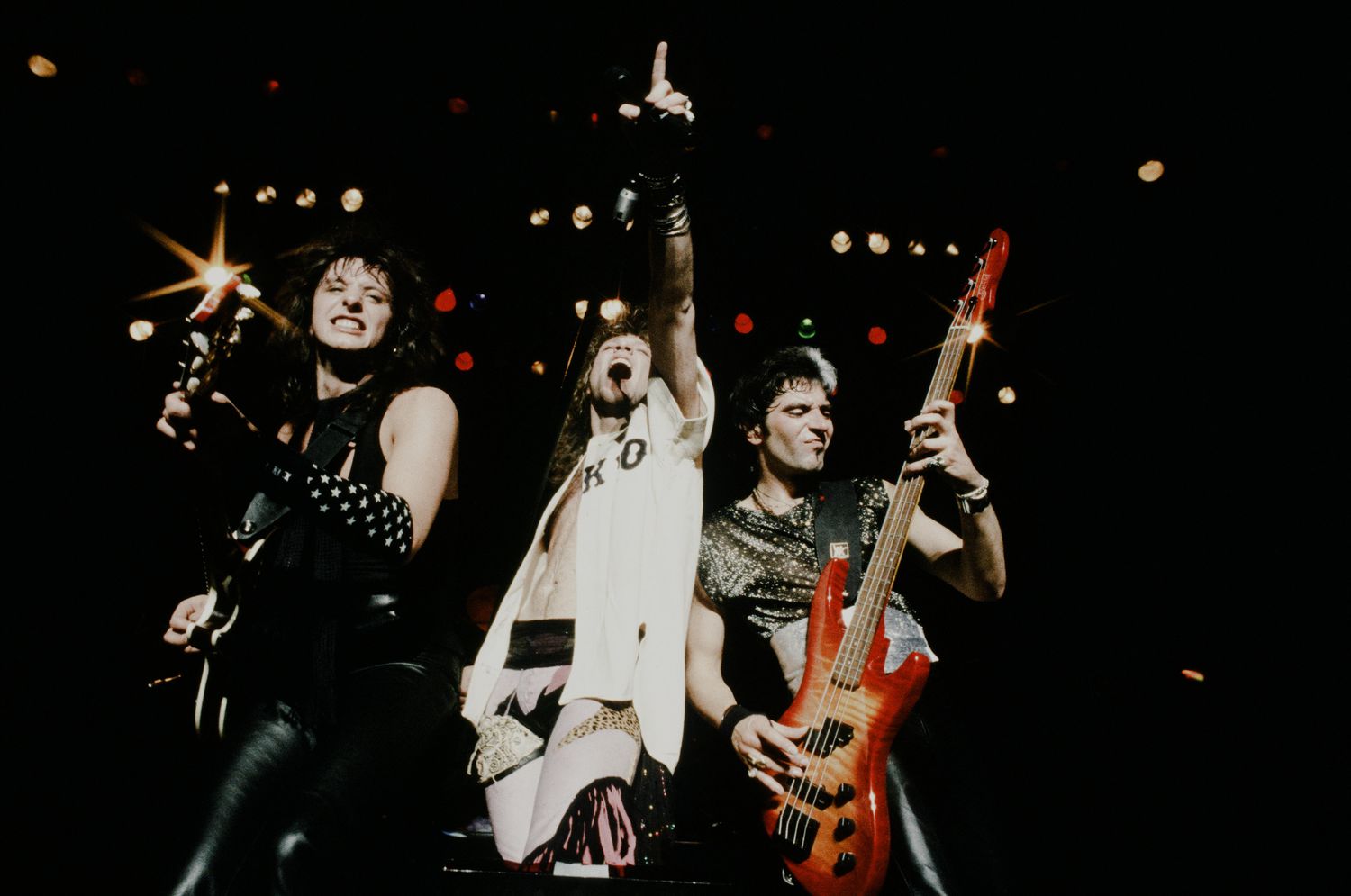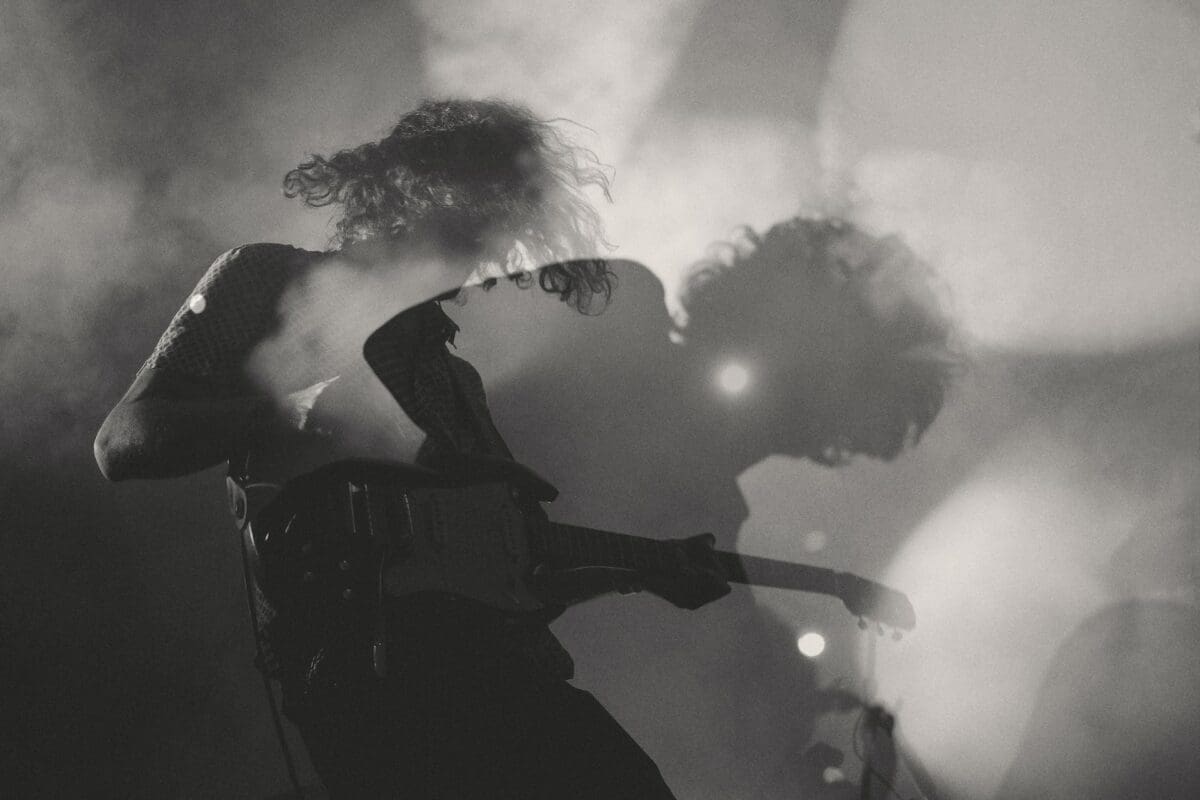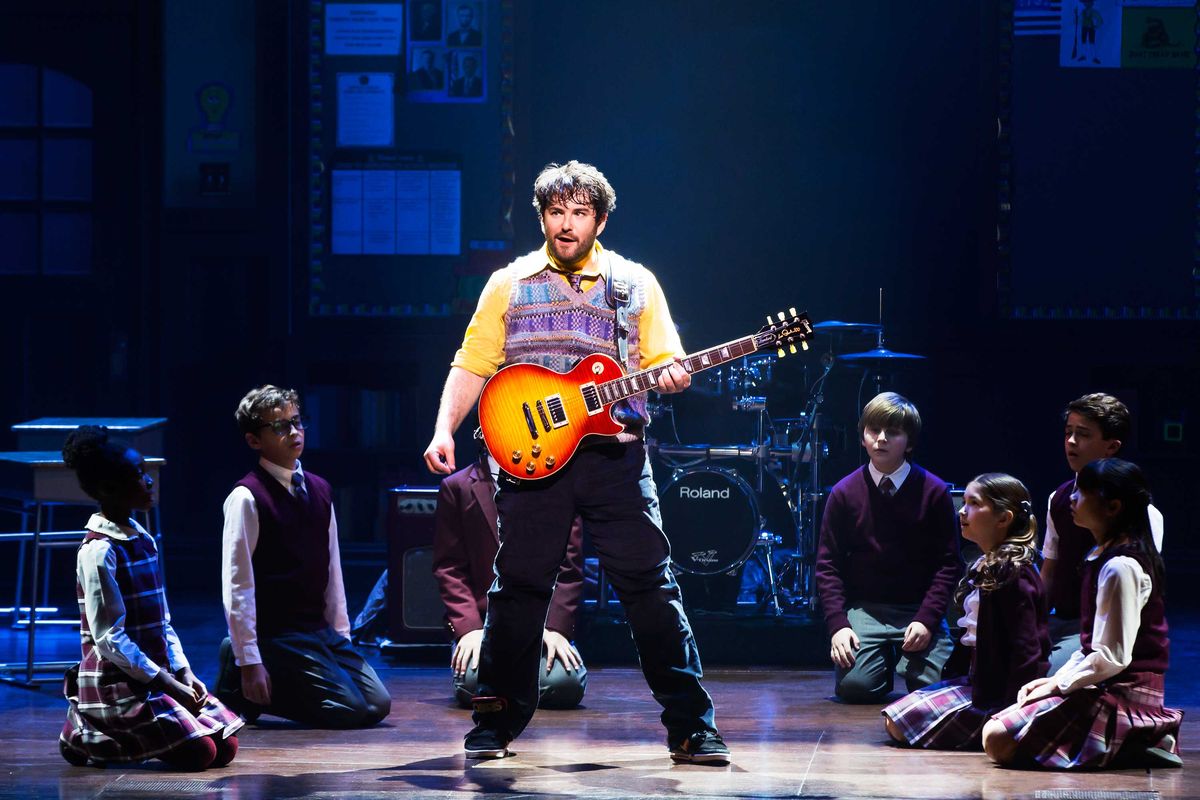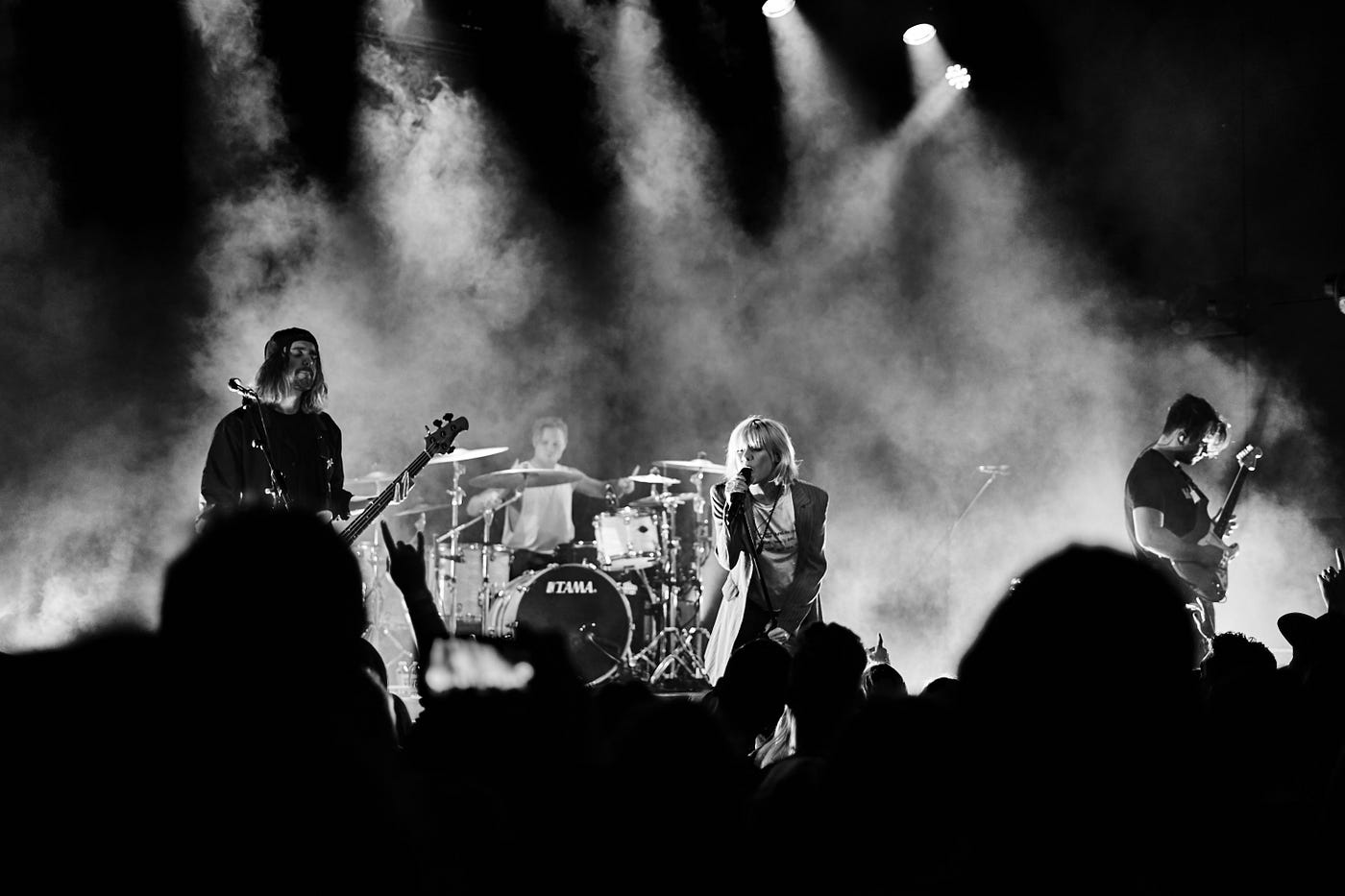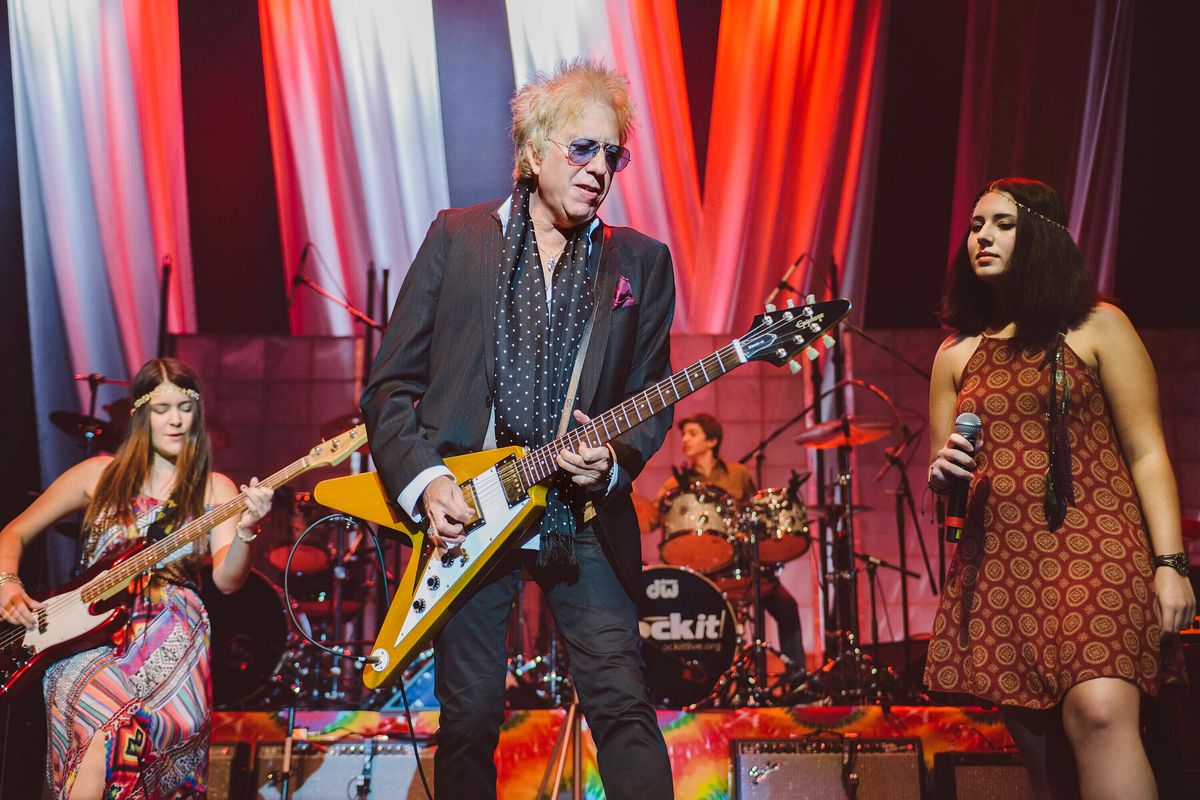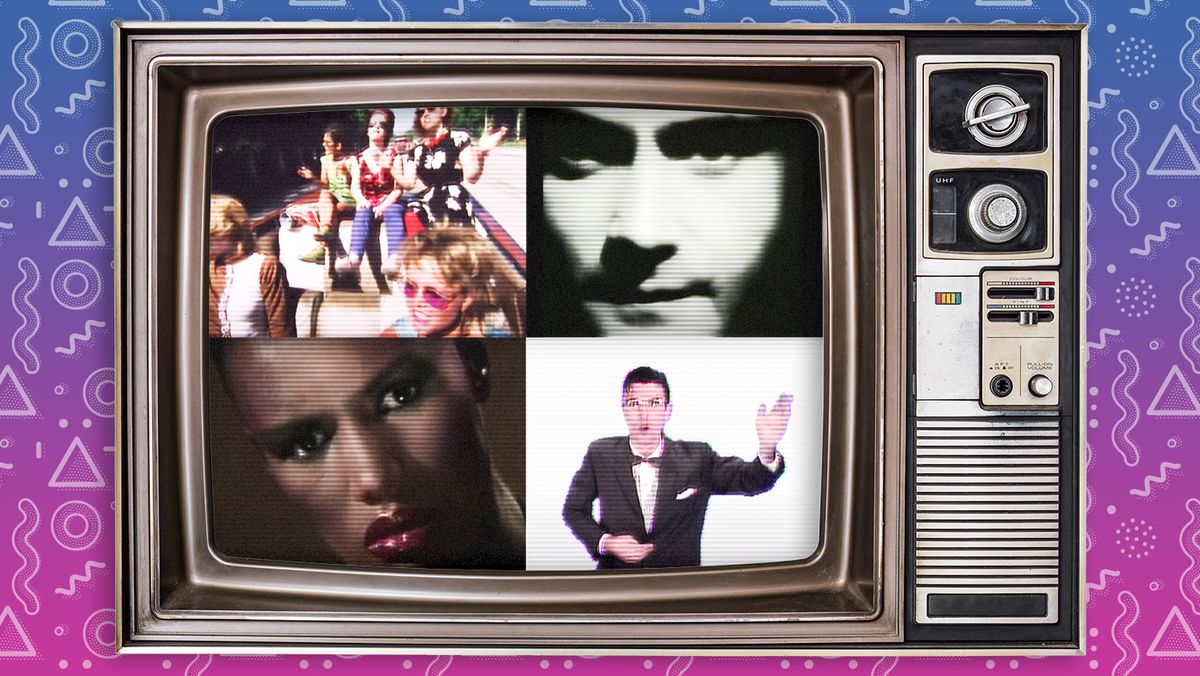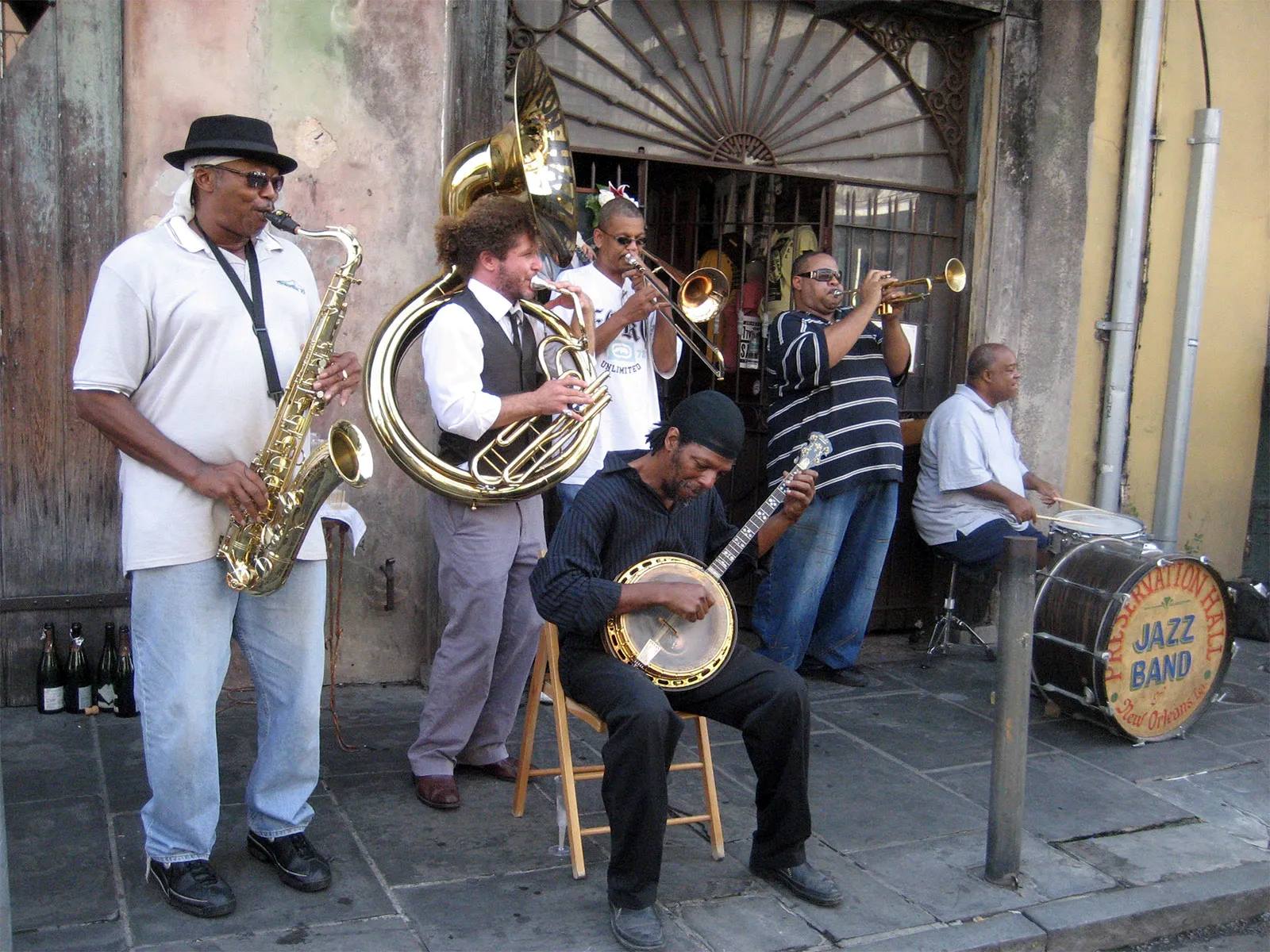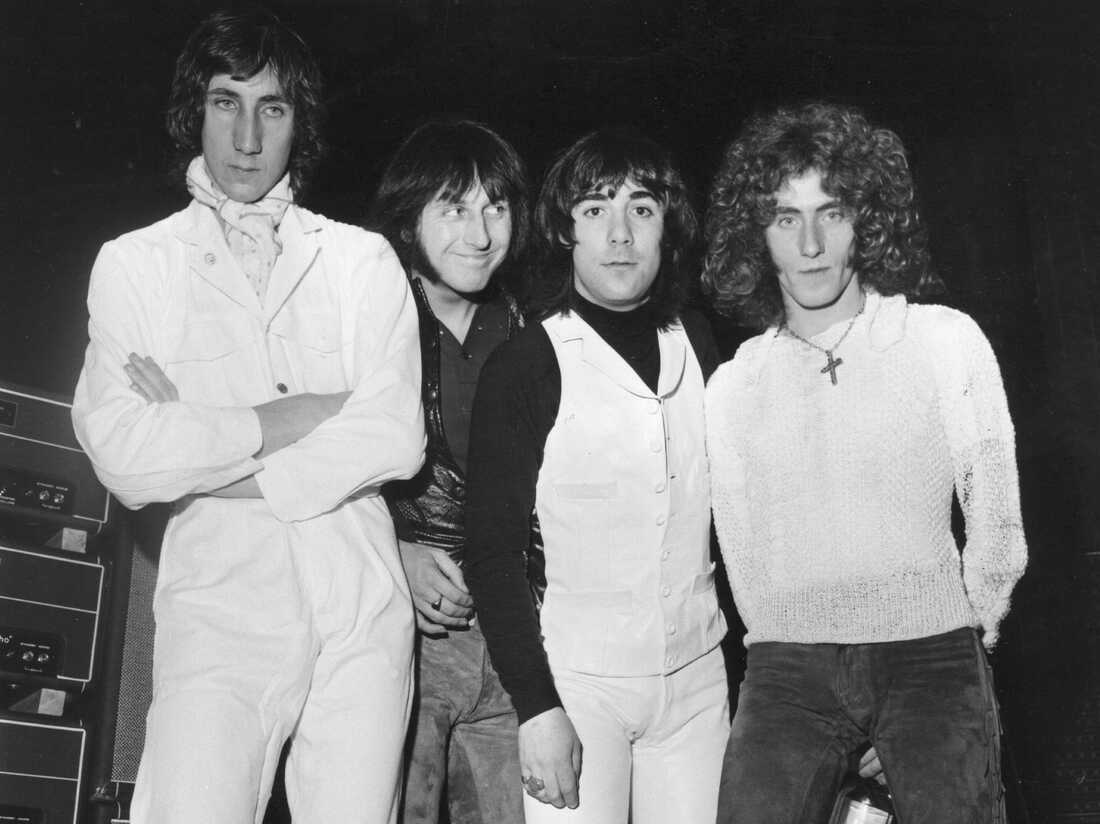Home>Genres>Rock>What Themes Were Popular In Rock Music During The Late 1960s And 1970s?


Rock
What Themes Were Popular In Rock Music During The Late 1960s And 1970s?
Modified: January 22, 2024
Discover the popular themes explored in rock music during the late 1960s and 1970s. Unearth the essence of this iconic genre that continues to resonate today.
(Many of the links in this article redirect to a specific reviewed product. Your purchase of these products through affiliate links helps to generate commission for AudioLover.com, at no extra cost. Learn more)
Table of Contents
- Introduction
- The Counterculture Movement and its Influence on Rock Music
- Psychedelic Rock: Evoking Mind-Altering Experiences
- Protest Songs: Expressing Political and Social Dissent
- Concept Albums: Telling Stories and Creating Immersive Experiences
- Glam Rock: Challenging Gender Norms and Embracing Extravagance
- Hard Rock and Heavy Metal: Amplifying Energy and Intensity
- Folk Rock: Blending Traditional Folk Music with Rock Elements
- Progressive Rock: Pushing Boundaries and Experimenting with Sound
- Disco: Creating Danceable and Groovy Tunes
- Conclusion
Introduction
The late 1960s and 1970s marked an era of tremendous cultural and social change, where music became a powerful medium for self-expression, rebellion, and artistic exploration. This period saw the rise of an influential counterculture movement that sparked a revolution in various art forms, including rock music.
Rock music during this time was characterized by its exploration of new sounds, unconventional song structures, and thought-provoking lyrics. Musicians pushed the boundaries of creativity and used their platform to address pressing social and political issues. The themes and styles that emerged during this period played a significant role in shaping the landscape of rock music for years to come.
In this article, we will delve into the popular themes prevalent in rock music during the late 1960s and 1970s. From psychedelic rock to protest songs, glam rock to progressive rock, we will explore the diverse range of sonic and thematic elements that captivated audiences and left a lasting impact on the genre.
The Counterculture Movement and its Influence on Rock Music
The counterculture movement of the late 1960s and 1970s was a cultural phenomenon that rejected mainstream values and norms. It encompassed a generation of individuals who sought alternative lifestyles and questioned societal conventions. This movement heavily influenced the themes and music of rock bands during this time.
Rock music became the anthem for this counterculture movement, serving as a channel for rebellion, social commentary, and a call for change. It provided a platform to address issues such as war, civil rights, gender equality, and the environment.
Many rock songs of this period expressed a sense of disillusionment with the establishment. Musicians used their lyrics to voice their opposition to the Vietnam War, such as Buffalo Springfield’s iconic song “For What It’s Worth.” Bob Dylan’s anthemic “Blowin’ in the Wind” also resonated with the anti-war sentiment, becoming an anthem for generations seeking peace and justice.
The counterculture movement also championed ideals of love, peace, and unity. This influenced the emergence of songs promoting peace and love, like The Beatles’ “All You Need Is Love” and John Lennon’s powerful solo track “Imagine.” These songs not only became anthems for the counterculture but also resonated with audiences worldwide.
Rock musicians of this era embraced a sense of individuality and encouraged self-expression. Their style and appearance often reflected their rejection of societal norms, as seen in the flamboyant outfits worn by artists like David Bowie and Freddie Mercury. This eccentricity became a symbol of the counterculture movement, perpetuating a sense of freedom and nonconformity.
The counterculture movement had a profound impact on the evolution of rock music. It paved the way for musicians to explore new sounds, experiment with genres, and push the limits of creativity. Without the influence of this movement, the music of the late 1960s and 1970s would not have had the same cultural and artistic significance.
Psychedelic Rock: Evoking Mind-Altering Experiences
One of the defining genres of the late 1960s and early 1970s was psychedelic rock. This genre, influenced by the use of mind-altering substances such as LSD, aimed to create an immersive and transcendental musical experience for the listeners. Psychedelic rock was characterized by its mesmerizing melodies, intricate instrumental arrangements, and introspective lyrics.
Psychedelic rock bands like Pink Floyd, Jefferson Airplane, and The Doors embraced the experimental nature of the genre, incorporating trippy guitar effects, unconventional song structures, and unconventional song structures, and ethereal vocals to transport listeners on a sonic journey.
Lyrically, psychedelic rock often delved into themes of consciousness expansion, spirituality, and the exploration of the inner self. Songs like Pink Floyd’s “Lucifer Sam” and The Beatles’ “I Am the Walrus” showcased the genre’s penchant for abstract and surrealistic imagery, inviting audiences to interpret their meaning in their own unique ways.
The cover art of many psychedelic rock albums also reflected the genre’s visual aesthetic. Vibrant, kaleidoscopic designs adorned album covers, further immersing listeners into the psychedelic experience. Artists like the iconic Roger Dean and H.R. Giger became synonymous with the psychedelic rock movement due to their captivating and mind-bending artwork.
Psychedelic rock’s influence extended beyond the music itself. It became a cultural movement, inspiring new forms of visual art and fashion. The vibrant, anarchic spirit of the genre found its way into the fashion choices of the time. Psychedelic patterns, tie-dye fabrics, and bell-bottom pants became staples of the counterculture wardrobe, allowing individuals to outwardly express their affinity for the genre and its ideals.
Psychedelic rock’s impact on the music industry is still felt today. Its experimentation with sound, incorporation of various musical elements, and unapologetic willingness to explore new realms of musical expression laid the groundwork for many future genres and subgenres of rock music. The influence of psychedelic rock can be seen in modern bands like Tame Impala and Temples, who continue to push the boundaries of sonic exploration.
Protest Songs: Expressing Political and Social Dissent
The late 1960s and 1970s were marked by significant political and social unrest, and rock musicians used their platform to address these pressing issues through protest songs. These songs became powerful anthems of resistance, giving voice to the frustrations and aspirations of a generation seeking change.
Artists like Bob Dylan, Joan Baez, and Neil Young were at the forefront of this movement, using their music to criticize war, social injustice, and inequality. Dylan’s iconic protest song, “The Times They Are a-Changin’,” captured the spirit of the era and became an anthem for social activists around the world.
Protest songs were a means of unity, rallying people together around a common cause. They provided a platform for individuals to articulate their discontent with the establishment and advocate for social change. Songs such as “Ohio” by Crosby, Stills, Nash & Young, which was written in response to the Kent State shootings, and Marvin Gaye’s “What’s Going On,” which addressed the racial tensions and social issues of the time, showcased the power of music as a tool for social commentary.
Furthermore, protest songs served as a source of inspiration and motivation for activists engaged in various social movements. Songs like Pete Seeger’s “We Shall Overcome” and Woody Guthrie’s “This Land is Your Land” became anthems for the Civil Rights Movement and the labor movement, respectively, resonating with the struggles and aspirations of those fighting for justice.
The impact of protest songs was felt not only in the United States but also globally. Musicians like John Lennon used their platform to advocate for peace and denounce war through songs like “Imagine” and “Give Peace a Chance.” These songs transcended borders and language barriers, becoming rallying cries for peace activists worldwide.
Protest songs of the late 1960s and 1970s continue to resonate with audiences today. Their themes of social justice and political dissent remain relevant in the face of contemporary challenges. The power of music to inspire change and provoke thought is a testament to the enduring impact of these protest songs and the artists who fearlessly used their platform to challenge the status quo.
Concept Albums: Telling Stories and Creating Immersive Experiences
The late 1960s and 1970s gave rise to a new form of artistic expression in rock music: the concept album. Concept albums were a departure from the traditional album format, as they were designed to tell a cohesive story or explore a central theme from start to finish. Musicians embraced this concept as a means to create immersive and memorable experiences for their listeners.
Pink Floyd’s “The Dark Side of the Moon” is a prime example of a concept album that captivated audiences with its introspective exploration of themes such as death, mental health, and the human condition. The album’s sequencing, seamless transitions between tracks, and recurring motifs created a narrative-driven experience that resonated deeply with listeners.
Another iconic concept album of this era is The Who’s “Tommy.” This rock opera tells the story of a deaf, dumb, and blind boy who becomes a pinball champion and a spiritual leader. Through its innovative blend of rock music and storytelling, “Tommy” challenged the boundaries of conventional rock albums, showcasing the potential to create a complete and immersive musical narrative.
Concept albums were not limited to progressive rock bands. Artists such as David Bowie, with his album “The Rise and Fall of Ziggy Stardust and the Spiders from Mars,” and The Beatles, with their groundbreaking “Sgt. Pepper’s Lonely Hearts Club Band,” also embraced the concept album format. These albums incorporated storytelling elements and thematic cohesion, allowing the artists to experiment with different musical styles and push the boundaries of creativity.
The concept album format provided artists with the opportunity to delve into a wide range of subjects and explore complex ideas. From social commentary to personal introspection, concept albums allowed musicians to tell stories, evoke emotions, and engage their audience on a deeper level. The immersive nature of these albums challenged listeners to fully immerse themselves in the music and embrace the concept being presented.
The influence of concept albums can still be felt in contemporary music. Artists like Radiohead, Kendrick Lamar, and Beyoncé have all explored the concept album format, using it as a vehicle to convey narratives, tackle societal issues, and create cohesive artistic experiences.
The concept album revolution of the late 1960s and 1970s paved the way for a new era of storytelling in rock music. These albums demonstrated the power of music to transport listeners to different worlds, engage them intellectually and emotionally, and leave a lasting impact long after the last note fades.
Glam Rock: Challenging Gender Norms and Embracing Extravagance
In the early 1970s, a musical movement known as glam rock emerged, characterized by its flamboyant and theatrical style. Glam rock challenged traditional gender norms and embraced a sense of extravagance in both music and fashion. It represented a glamorous escape from the social and cultural constraints of the time.
Glam rock artists, such as David Bowie, T. Rex, and Queen, pushed boundaries with their androgynous appearances and non-conformist attitudes. David Bowie’s alter ego, Ziggy Stardust, was a prime example of this gender-bending aesthetic, with his colorful costumes, dramatic makeup, and provocative stage presence.
Lyrically, glam rock often tackled themes of individuality, sexual liberation, and self-expression. Songs like T. Rex’s “Ride a White Swan” and David Bowie’s “Rebel Rebel” celebrated the freedom to be oneself and challenged societal expectations of masculinity and femininity.
Glam rock’s influence extended beyond the music. It inspired a visual revolution in fashion, with artists like David Bowie and Marc Bolan becoming style icons. Glitter, platform shoes, and outlandish outfits became synonymous with the genre, reflecting its decadent and rebellious spirit.
Glam rock provided a space for marginalized communities, including the LGBTQ+ community, to express themselves authentically. By breaking gender norms and celebrating diversity, glam rock artists helped pave the way for greater acceptance and visibility for individuals who did not fit societal expectations.
The legacy of glam rock can still be felt in contemporary music and fashion. Its influence can be seen in the eccentricity of artists like Lady Gaga, the theatricality of bands like The Killers, and the blurring of gender boundaries in popular culture.
Glam rock was not just a musical genre; it was a cultural movement that challenged norms, celebrated individuality, and championed freedom of expression. By embracing extravagance and defying societal conventions, glam rock left an indelible mark on the music industry and opened doors for future generations of artists to explore their own unique identities.
Hard Rock and Heavy Metal: Amplifying Energy and Intensity
As the 1970s progressed, the rock music landscape saw the rise of hard rock and heavy metal, two genres that pushed the boundaries of sound, energy, and intensity. These genres embraced powerful riffs, aggressive vocals, and thunderous rhythms, captivating audiences with their raw and electrifying performances.
Hard rock and heavy metal bands such as Led Zeppelin, Black Sabbath, and Deep Purple became pioneers of this new wave of rock music. They emphasized loud, distorted guitar tones, pounding drums, and soaring vocals, creating an adrenaline-fueled sonic experience that resonated with fans seeking an escape from the monotony of everyday life.
Lyrically, hard rock and heavy metal often explored darker and more controversial themes. Black Sabbath’s music, for example, delved into topics such as war, death, and the occult. These lyrics, coupled with the heavy and aggressive sound, added an element of rebellion and confrontational energy to the music.
The visual aesthetic of hard rock and heavy metal was just as significant as the music itself. Artists like Kiss and Alice Cooper pioneered the use of elaborate stage shows, eccentric costumes, and theatrical makeup, adding a visual spectacle that matched the intensity of the music. These elements helped create a larger-than-life persona for the artists and further enhanced the overall experience for the audience.
Hard rock and heavy metal had a significant impact on the development of rock music as a whole. The energy and aggression of these genres influenced subsequent subgenres, such as thrash metal, punk rock, and grunge, which further pushed the boundaries of rock music’s intensity.
The legacy of hard rock and heavy metal can still be felt in modern rock music. Bands such as Metallica, Iron Maiden, and Guns N’ Roses continue to carry the torch, delivering high-energy performances and captivating audiences with their intense and powerful sound.
Hard rock and heavy metal shaped the rock music landscape of the late 1960s and 1970s and continue to be celebrated for their ability to unleash a raw and exhilarating musical experience. Through their amplified energy and aggressive sound, these genres provided a cathartic outlet for fans and set the stage for the evolution of rock music in the decades to come.
Folk Rock: Blending Traditional Folk Music with Rock Elements
In the late 1960s and 1970s, a genre known as folk rock emerged, combining the melodic and storytelling aspects of traditional folk music with the energy and instrumentation of rock. Folk rock artists infused their music with electrified instruments, creating a new sound that resonated with both fans of folk and rock music.
Artists like Bob Dylan, Simon & Garfunkel, and The Byrds played a significant role in popularizing folk rock. They took traditional folk songs and added electric guitars, drums, and other rock elements, creating a more dynamic and contemporary sound. By blending these genres, folk rock brought a fresh perspective to storytelling through music.
Lyrically, folk rock often focused on personal and societal issues. Artists used their songs to tell stories, reflecting on topics such as love, social change, and political unrest. Bob Dylan’s powerful protest songs, like “Blowin’ in the Wind” and “The Times They Are a-Changin’,” became anthems for social activists seeking a better world.
Folk rock also celebrated the spirit of community and togetherness. The genre created a sense of unity through its relatable lyrics and accessible melodies. Songs like Simon & Garfunkel’s “Bridge Over Troubled Water” and Crosby, Stills, Nash & Young’s “Teach Your Children” resonated with audiences, providing solace and inspiration during a time of social upheaval.
While folk rock incorporated elements of rock music, it never lost sight of its folk roots. Acoustic guitars, mandolins, and other traditional instruments were still prominent in the genre, blending seamlessly with the rock instrumentation. This fusion created a unique sonic palette that appealed to a wide range of listeners.
Folk rock’s influence can still be heard in contemporary music. Artists like Mumford & Sons, The Lumineers, and Fleet Foxes have drawn inspiration from the genre, incorporating folk elements into their own sound. These artists continue to tell stories and capture the essence of folk rock, keeping its spirit alive for new generations of listeners.
Folk rock represented a bridge between traditional and contemporary music, bringing folk music into the mainstream while maintaining its essence. Its timeless melodies and thought-provoking lyrics spoke to the hearts of listeners, leaving an indelible mark on the music landscape of the late 1960s and 1970s.
Progressive Rock: Pushing Boundaries and Experimenting with Sound
In the late 1960s and 1970s, a genre known as progressive rock emerged, characterized by its complexity, virtuosity, and ambitious musical structures. Progressive rock bands pushed the boundaries of conventional rock music, incorporating elements of classical, jazz, and psychedelic music to create a unique and experimental sound.
Bands like Pink Floyd, Yes, and Genesis embraced long song structures, intricate instrumental arrangements, and complex time signatures, challenging traditional notions of songwriting. They pushed the limits of studio technology, utilizing synthesizers, Mellotrons, and other experimental instruments to create rich and textured soundscapes.
The lyrics of progressive rock often delved into profound and thought-provoking themes. From philosophical musings to fantastical storytelling, bands explored a wide range of subjects. Pink Floyd’s “The Wall” told a narrative of isolation and disillusionment, while Yes’ “Close to the Edge” took listeners on an existential journey.
Progressive rock albums were often conceptual in nature, with cohesive themes running through the entire record. Bands crafted entire musical suites, where individual songs seamlessly flowed into one another, creating a continuous and immersive listening experience. Albums like Pink Floyd’s “The Dark Side of the Moon” and King Crimson’s “In the Court of the Crimson King” demonstrated the genre’s ability to create sonic narratives that captivated audiences from start to finish.
The virtuosity of progressive rock musicians was also a hallmark of the genre. Instrumental proficiency and complex arrangements allowed musicians to showcase their technical prowess. Extended guitar solos, intricate keyboard passages, and elaborate drumming became an integral part of progressive rock’s sonic landscape.
The influence of progressive rock can be heard in various genres and bands today. Artists like Muse, Radiohead, and Dream Theater draw inspiration from the genre’s experimentation with sound and its willingness to push musical boundaries. Progressive rock paved the way for future innovations in rock music and continues to inspire musicians to think outside the box.
Progressive rock challenged the conventions of the time, opening doors for creative exploration and experimentation. With its complex arrangements, thought-provoking lyrics, and boundary-pushing sound, the genre left an indelible mark on the music scene of the late 1960s and 1970s, inspiring generations of musicians to think outside the box and embrace the limitless possibilities of musical expression.
Disco: Creating Danceable and Groovy Tunes
In the mid-1970s, disco emerged as a vibrant and exuberant genre of music, characterized by its infectious beats, soaring vocals, and pulsating rhythms. Disco provided a new and exciting sound that emphasized danceability and encouraged people to hit the dance floor.
Disco songs were known for their groovy basslines, catchy melodies, and the use of funk and soul elements. Artists like Donna Summer, Bee Gees, and Chic dominated the disco era, creating chart-topping hits that became instant classics. Songs like Donna Summer’s “I Feel Love,” Bee Gees’ “Stayin’ Alive,” and Chic’s “Le Freak” filled dancefloors and created a cultural phenomenon.
Disco lyrics often reflected a carefree and celebratory lifestyle. They focused on themes of love, dancing, and escape from daily life. Disco music served as a joyful escape for many, providing a temporary respite from the troubles of the world.
The rise of disco also coincided with the popularity of discotheques and club culture. Discotheques became social gathering spaces where people could come together to dance, socialize, and immerse themselves in the vibrant energy of disco music. The music and culture of disco were intertwined, creating a sense of community and shared experience on the dance floor.
The disco era also influenced fashion and style. Artists and fans embraced flashy and glamorous outfits, mirrored balls, and colorful lighting. Disco fashion became synonymous with shimmering clothing, platform shoes, and extravagant accessories, adding to the overall disco experience.
While disco music enjoyed immense popularity in the 1970s, it faced a decline in the early 1980s due to shifting musical trends. However, its impact on popular music cannot be underestimated. Many elements of disco, such as danceable beats and groovy basslines, continue to influence contemporary pop and dance music.
Disco left a lasting legacy in the music industry and popular culture. Its emphasis on danceability, infectious energy, and celebration of life continue to resonate with audiences today. Disco remains a soundtrack to joy and a reminder of the power of music to bring people together on the dance floor.
Conclusion
The late 1960s and 1970s were a transformative period for rock music, with various genres and themes emerging that would shape the future of the genre. The counterculture movement influenced the themes of rebellion, peace, and social change, while psychedelic rock pushed the boundaries of sound and consciousness. Protest songs provided a platform for addressing political and social issues, while concept albums created immersive storytelling experiences.
Glam rock challenged gender norms and embraced extravagance, while hard rock and heavy metal amplified energy and intensity. Folk rock blended tradition with innovation, and progressive rock pushed the boundaries of experimentation. Finally, disco created a groovy and danceable sound that resonated with audiences on the dance floor.
These diverse themes and genres not only captured the spirit of the times but also continue to influence and inspire musicians today. The themes explored in the late 1960s and 1970s mirror the ongoing social and political issues of current times, and the innovative sounds and artistic experimentation have paved the way for future generations of musicians.
Ultimately, the rock music of this era became a powerful form of expression, allowing artists to challenge societal norms, share their thoughts and experiences, and unite audiences in a shared passion for music. The impact of this era is evident in the continued popularity and influence of the music and artists from the late 1960s and 1970s.
As we reflect on this remarkable period in rock music history, it is clear that the themes, sounds, and artistic innovations of the late 1960s and 1970s continue to resonate and shape the landscape of music and culture today. The legacy of this period serves as a reminder of the power of music to evoke emotions, provoke thought, and create lasting connections that transcend time and generations.

